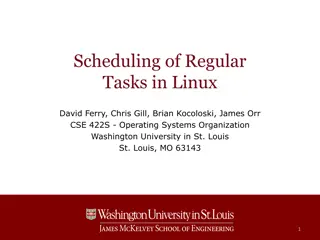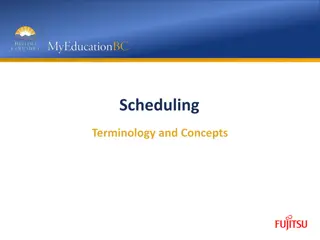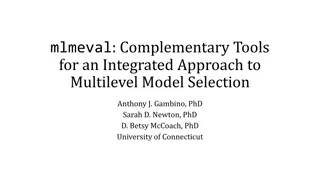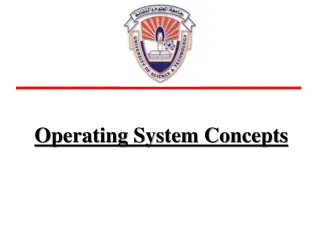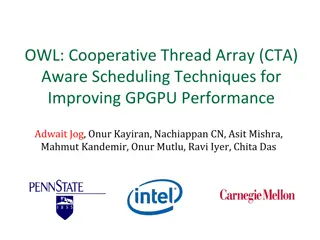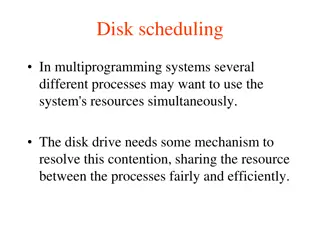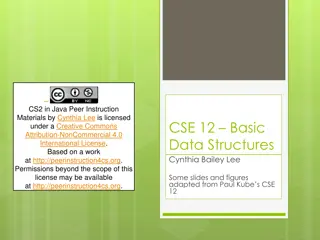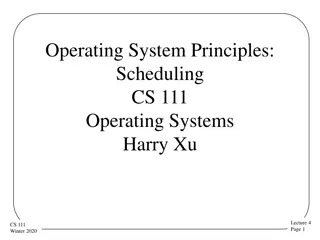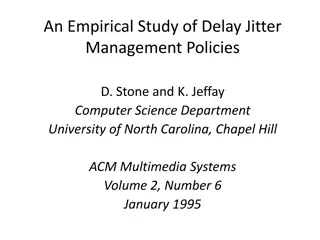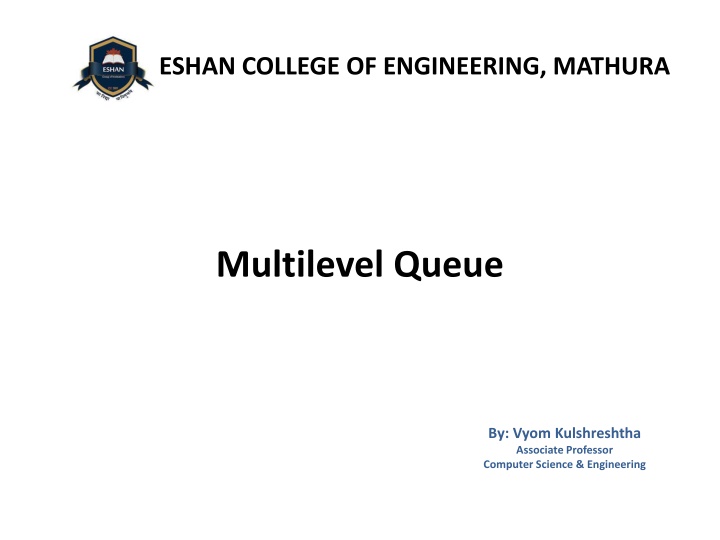
Multilevel Queue Scheduling at Eshan College of Engineering
"Explore the efficient multilevel queue scheduling system implemented at Eshan College of Engineering, Mathura, designed by Vyom Kulshreshtha, an associate professor in Computer Science & Engineering."
Download Presentation

Please find below an Image/Link to download the presentation.
The content on the website is provided AS IS for your information and personal use only. It may not be sold, licensed, or shared on other websites without obtaining consent from the author. If you encounter any issues during the download, it is possible that the publisher has removed the file from their server.
You are allowed to download the files provided on this website for personal or commercial use, subject to the condition that they are used lawfully. All files are the property of their respective owners.
The content on the website is provided AS IS for your information and personal use only. It may not be sold, licensed, or shared on other websites without obtaining consent from the author.
E N D
Presentation Transcript
ESHAN COLLEGE OF ENGINEERING, MATHURA Multilevel Queue By: Vyom Kulshreshtha Associate Professor Computer Science & Engineering
ESHAN COLLEGE OF ENGINEERING, MATHURA Ready queue is partitioned into separate queues: foreground (interactive) background (batch) Each queue has its own scheduling algorithm: foreground RR background FCFS Scheduling must be done between the queues: Fixed priority scheduling; (i.e., serve all from foreground then from background). Possibility of starvation. Time slice each queue gets a certain amount of CPU time which it can schedule amongst its processes; i.e., 80% to foreground in RR 20% to background in FCFS By: Vyom Kulshreshtha Associate Professor Computer Science & Engineering
ESHAN COLLEGE OF ENGINEERING, MATHURA Multilevel Queue Scheduling By: Vyom Kulshreshtha Associate Professor Computer Science & Engineering
ESHAN COLLEGE OF ENGINEERING, MATHURA Multilevel Feedback Queue A process can move between the various queues; aging can be implemented this way. Multilevel-feedback-queue scheduler defined by the following parameters: number of queues scheduling algorithms for each queue method used to determine when to upgrade a process method used to determine when to demote a process method used to determine which queue a process will enter when that process needs service By: Vyom Kulshreshtha Associate Professor Computer Science & Engineering
ESHAN COLLEGE OF ENGINEERING, MATHURA Example of Multilevel Feedback Queue Three queues: Q0 RR with time quantum 8 milliseconds Q1 RR time quantum 16 milliseconds Q2 FCFS Scheduling A new job enters queue Q0which is servedFCFS. When it gains CPU, job receives 8 milliseconds. If it does not finish in 8 milliseconds, job is moved to queue Q1. At Q1 job is again served FCFS and receives 16 additional milliseconds. If it still does not complete, it is preempted and moved to queue Q2. By: Vyom Kulshreshtha Associate Professor Computer Science & Engineering
ESHAN COLLEGE OF ENGINEERING, MATHURA Multilevel Feedback Queues By: Vyom Kulshreshtha Associate Professor Computer Science & Engineering
ESHAN COLLEGE OF ENGINEERING, MATHURA Thread Scheduling Distinction between user-level and kernel-level threads Many-to-one and many-to-many models, thread library schedules user-level threads to run on LWP Known as process-contention scope (PCS) since scheduling competition is within the process Kernel thread scheduled onto available CPU is system- contention scope (SCS) competition among all threads in system By: Vyom Kulshreshtha Associate Professor Computer Science & Engineering
ESHAN COLLEGE OF ENGINEERING, MATHURA Pthread Scheduling API allows specifying either PCS or SCS during thread creation PTHREAD SCOPE PROCESS schedules threads using PCS scheduling PTHREAD SCOPE SYSTEM schedules threads using SCS scheduling. By: Vyom Kulshreshtha Associate Professor Computer Science & Engineering
ESHAN COLLEGE OF ENGINEERING, MATHURA Pthread Scheduling API #include <pthread.h> #include <stdio.h> #define NUM THREADS 5 int main(int argc, char *argv[]) { int i; pthread t tid[NUM THREADS]; pthread attr t attr; /* get the default attributes */ pthread attr init(&attr); /* set the scheduling algorithm to PROCESS or SYSTEM */ pthread attr setscope(&attr, PTHREAD SCOPE SYSTEM); /* set the scheduling policy - FIFO, RT, or OTHER */ pthread attr setschedpolicy(&attr, SCHED OTHER); /* create the threads */ for (i = 0; i < NUM THREADS; i++) pthread create(&tid[i],&attr,runner,NULL); By: Vyom Kulshreshtha Associate Professor Computer Science & Engineering
ESHAN COLLEGE OF ENGINEERING, MATHURA Pthread Scheduling API /* now join on each thread */ for (i = 0; i < NUM THREADS; i++) pthread join(tid[i], NULL); } /* Each thread will begin control in this function */ void *runner(void *param) { printf("I am a thread\n"); pthread exit(0); } By: Vyom Kulshreshtha Associate Professor Computer Science & Engineering

